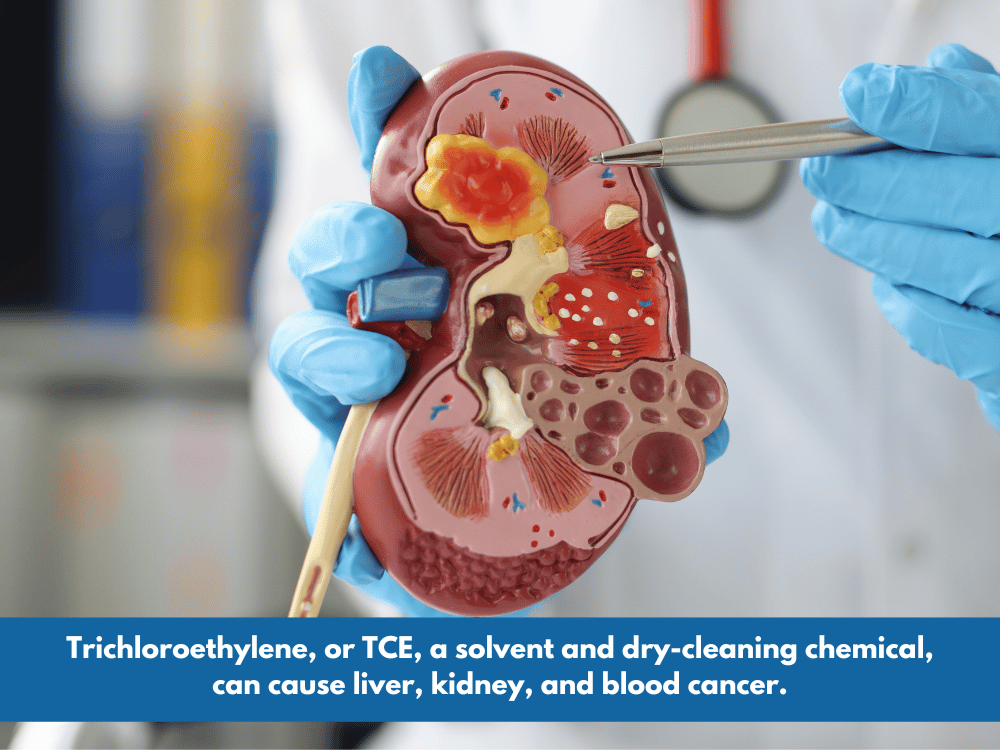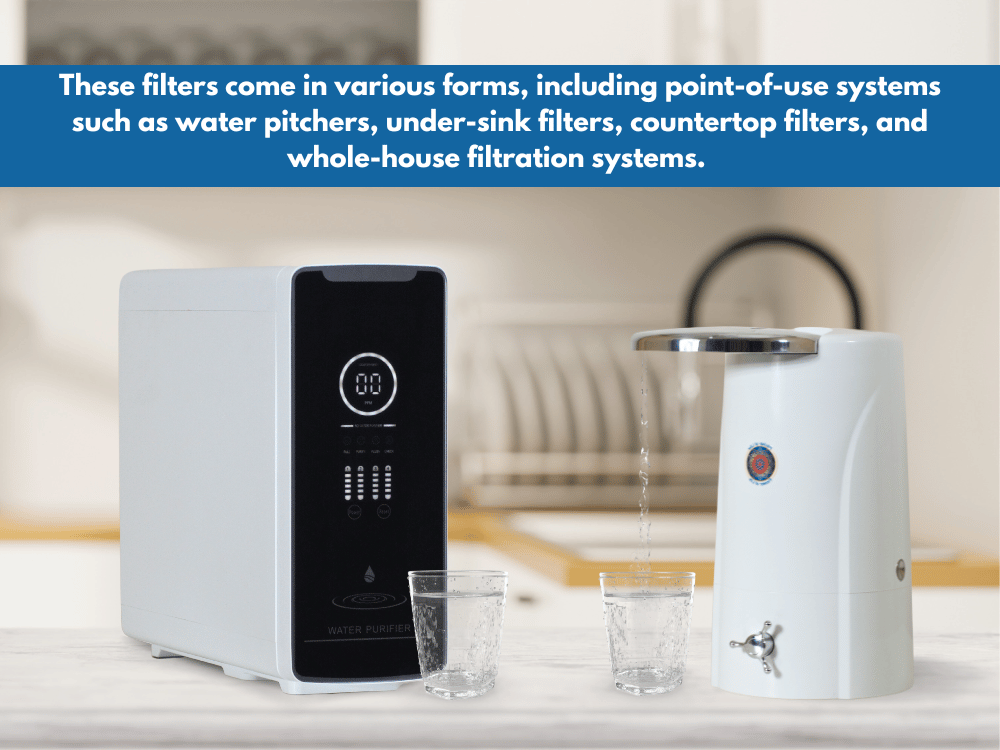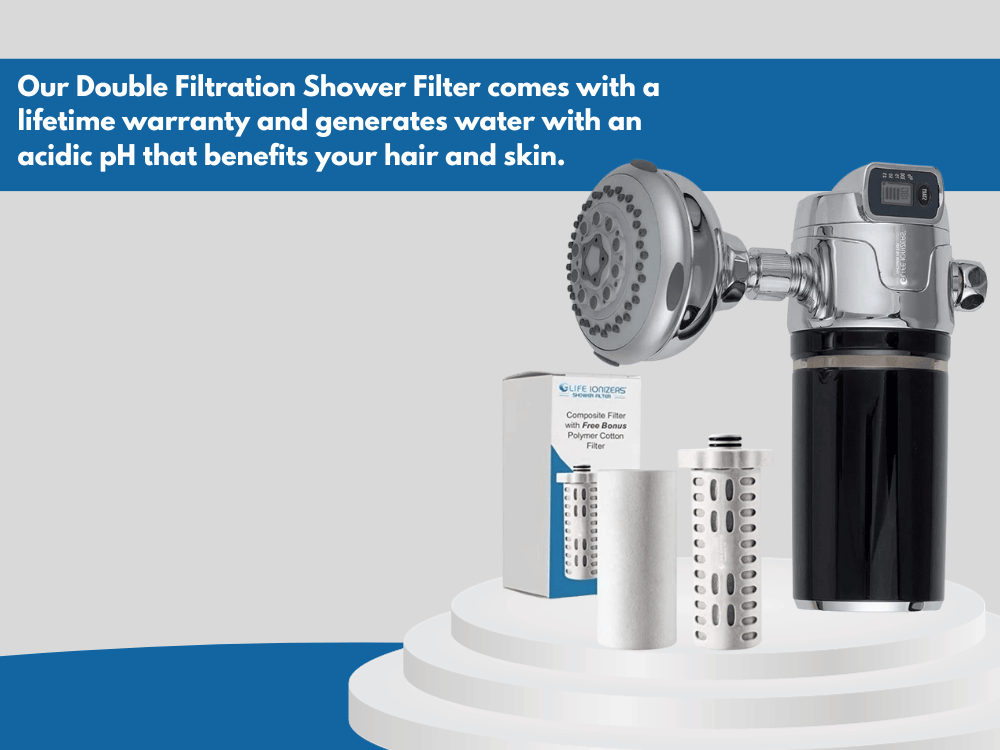Volatile Organic Chemicals (VOCs) are a class of liquid or solid chemicals that evaporate into gases. These compounds play a significant role in environmental pollution and can often be found in groundwater.
Groundwater, an invisible but vital resource, provides drinking water to 155 million people and supports a daily pump of over 75 billion gallons. While groundwater remains a reliable source, it is not immune to contamination, and understanding the factors influencing groundwater quality is important.

Health Effects of VOCs Exposure
The Environmental Protection Agency (EPA) regulates 23 volatile organic compounds, and city water suppliers must monitor them. If VOC levels exceed EPA-established maximum contaminant levels, corrective actions are required.
VOCs pose health risks due to their diversity. However, evidence suggests that exposure to VOCs can cause various adverse effects, including:
- Irritation of the eyes, nose, and throat.
- Headaches and coordination loss.
- Nausea.
- Prolonged exposure can damage the liver, kidneys, and central nervous system.
- VOCs in water, especially when inhaled as steam during a hot shower, can potentially lead to skin irritation.
- VOCs in shower water can strip your hair of natural oils, leaving it dry, brittle, and prone to breakage.
- VOCs can cause various cancer types. For instance,
- Benzene increases leukemia and lymphoma risk.
- Carbon tetrachloride, a solvent, increases non-Hodgkin lymphoma risk.
- Tetrachloroethylene, or PERC, a dry-cleaning chemical, causes bladder cancer.
- Trichloroethylene, or TCE, a solvent and dry-cleaning chemical, can cause liver, kidney, and blood cancer.
VOCs in Groundwater
VOCs in groundwater are a concern, especially for individuals who rely on well water for drinking and irrigation purposes. It’s essential to differentiate between domestic and irrigation wells.
While domestic wells supply water for drinking, cooking, laundry, and other household uses within the home, irrigation wells are predominantly used for outdoor purposes. For example, watering gardens and lawns.
How VOCs Enter Groundwater
Most VOCs enter the water supply directly due to human activity, primarily due to improper handling and disposal.
- Leaching into Ground: Improper disposal of volatile organic compounds can lead to leaching into the ground. This initial infiltration often occurs near industrial sites, dry cleaners, and gas stations.
- Migration to Aquifers: Once VOCs infiltrate groundwater, they can migrate from aquifers to other water bodies, such as lakes and reservoirs.
- Precipitation Transport: VOCs can be further transported through precipitation. Rainfall and other forms of precipitation can carry these compounds from contaminated areas to water supplies, including wells and municipal water treatment plants.
Common Waterborne VOCs
A 2006 U.S. Geological Survey study of groundwater and drinking water wells found VOCs in 90 of 98 aquifers tested nationwide, with the most frequent detections in California, Florida, Nevada, and the New England and mid-Atlantic states.
They are commonly found in gasoline, diesel fuel, petroleum-based products, carpets, paints, varnishes, glues, and more.
Industries use VOCs in automobiles, electronics, wood products, adhesives, and plastics.
VOCs are present in everyday products such as perfumes, deodorants, insect repellents, and pharmaceuticals.
While numerous VOCs can be found in water, three of the most prevalent are:
- Trihalomethane: Trihalomethane is the most common VOC in water and is a byproduct of water disinfection. It forms when chlorine is added to water for sterilization, especially in municipal water treatment plants. It is also created when private well owners use chlorine in their wells.
- PCE (Perchloroethylene): PCE is a byproduct of solvents and is commonly used in dry cleaning and industrial degreasing. It can also be found in consumer products like shoe polish and inks.
- MTBE (Methyl tert-butyl ether): MTBE is a fuel additive and was introduced when lead was phased out of gasoline. It has been found in groundwater due to spillages and leaks from underground storage tanks.
Responding to High VOCs Levels in Well Water
If your domestic well has VOC levels exceeding safe drinking water standards, it is crucial to take appropriate actions to protect your health and your Family. In such cases:
- Do Not Use Contaminated Water: Avoid drinking or cooking with well water and arrange for an alternative water supply, such as bottled water. Boiling water is not recommended as it releases VOCs into the air, where they can be inhaled.
- Exercise Caution with Household Activities: Depending on VOCs levels, it is necessary to be cautious during activities like bathing, showering, hand washing, dishwashing, and using appliances like dishwashers or laundry machines. VOCs released into the air during these activities can be inhaled.
- Ventilate Indoor Areas: To reduce the presence of VOCs in the air, ventilate indoor areas by opening windows or using exhaust fans while using your water.
Activated carbon filter for removing VOCs from water
Activated carbon filters remove VOCs from water due to their adsorption properties.
Since VOCs are organic compounds, they are carbon-based, and activated carbon filters can capture and eliminate these compounds.
These filters come in various forms, including point-of-use systems such as water pitchers, under-sink filters, countertop filters, and whole-house filtration systems.

Reverse Osmosis (RO) for VOC Removal
Reverse osmosis systems remove VOCs from water, but they require carbon pre-filters or post-filters. RO alone is ineffective at removing VOCs, as these compounds can pass through the RO membrane. Carbon filters are commonly integrated into RO systems and capture VOCs before reaching drinking water.
Experience the future of water purification with our Life Sciences Reverse Osmosis Alkaline Water Purifying Generator featuring Tankless technology. It removes up to 98% of contaminants, creating mineralized alkaline water with over 40 health benefits.
This water not only hydrates you more effectively but also provides powerful antioxidants to boost your energy and immune system. Plus, you can use highly purified water for cooking and cleaning. click here
Note:
Explore our range of water treatment solutions, from Whole Home Systems to Double Filtration Shower Filters, Water Filtration Systems, and Reverse Osmosis. These solutions are equipped with carbon filters designed to remove VOCs (Volatile Organic Compounds) effectively. These carbon filters use activated carbon, which has a porous structure that adsorbs and traps organic compounds, including VOCs, from the water. Click here for more information: Visit
Choose the Right Shower Filter: Shower filters remove a broad range of contaminants, including VOCs.

Double Filtration Shower Filter with Shower Head
You wouldn’t drink contaminated water, so why shower in it? Our advanced double filtration system removes 99% of chlorine and other impurities VOCs, ensuring the cleanest and healthiest shower possible.
Our Double Filtration Shower Filter comes with a lifetime warranty and generates water with an acidic pH that benefits your hair and skin.
Our revolutionary double filtration system, with activated carbon fiber and polymer cotton filters, guarantees the removal of 99% of chlorine. This leaves your skin, hair, and nails revitalized.
Click here for more insights: Shower filter
Introducing Hydrogen Alkaline Bio Energy Water System, is a cutting-edge 5-filter system designed to provide optimal hydration and vitality.
This advanced filtration system features Stage 5 filter Technology. Each of the filters offers specialized removal of a full range of impurities including VOC, heavy metals, fluoride, and more, thereby ensuring clean and safe drinking water.
The Alkaline Antioxidant Filter in this system elevates water quality by balancing pH levels and infusing antioxidants, promoting overall well-being.
Grab this opportunity to benefit from this fully integrated drinking water system. This will unlock the potential of healthy alkaline mineral water with dynamic antioxidant water to neutralize free radicals, slow down cell damage, and enhance your health. click here
In summary, understanding the sources of VOCs in water, their health risks, and the available methods for their removal is vital to safeguarding water quality. This is vital to protecting individuals’ and communities’ health. Regular testing and appropriate water filtration systems are essential steps in addressing VOC contamination.
Get your Free Water Quality Analysis Report from Life Water Report and ensure your Family’s health. Contact us now to schedule your water assessment and explore customized water solutions for your home! Visit this link
REFERENCES
- National Research Council (US) Committee on Contaminated Drinking Water at Camp Lejeune. Contaminated Water Supplies at Camp Lejeune: Assessing Potential Health Effects. Washington (DC): National Academies Press (US); 2009. 3, Systemic Exposures to Volatile Organic Compounds and Factors Influencing Susceptibility to Their Effects. Available from: https://www.ncbi.nlm.nih.gov/
books/NBK215288/ - Comparative Risk Analysis of Six Volatile Organic Compounds in California Drinking Water Pamela Williams, Laurie Benton, John Warmerdam, and Patrick Sheehan Environmental Science & Technology 2002 36 (22), 4721-4728 DOI: 10.1021/es020725y
- Environmental Protection Agency. Integrated Risk Information System Assessment for 1,2-Dichloroethane. 1987. Available at cfpub.epa.gov/ncea/iris2/
chemicalLanding.cfm?substance_ nmbr=149. - California Office of Environmental Health Hazard Assessment. Public Health Goal for 1,2-Dichloropropane in Drinking Water. 1999. Available at oehha.ca.gov/media/downloads/
water/chemicals/phg/12dcpf.pdf . - Environmental Protection Agency. Integrated Risk Information System Assessment for 1,1,2-Trichloroethane. 1987. Available at cfpub.epa.gov/ncea/iris2/
chemicalLanding.cfm?substance_ nmbr=198.
